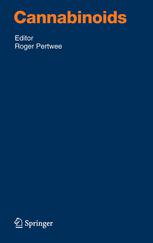

Most ebook files are in PDF format, so you can easily read them using various software such as Foxit Reader or directly on the Google Chrome browser.
Some ebook files are released by publishers in other formats such as .awz, .mobi, .epub, .fb2, etc. You may need to install specific software to read these formats on mobile/PC, such as Calibre.
Please read the tutorial at this link: https://ebookbell.com/faq
We offer FREE conversion to the popular formats you request; however, this may take some time. Therefore, right after payment, please email us, and we will try to provide the service as quickly as possible.
For some exceptional file formats or broken links (if any), please refrain from opening any disputes. Instead, email us first, and we will try to assist within a maximum of 6 hours.
EbookBell Team

4.1
20 reviewsLess than 20 years ago the ?eld of cannabis and the cannabinoids was still c- sidered a minor, somewhat quaint, area of research. A few groups were active in the ?eld, but it was already being viewed as stagnating. The chemistry of cannabis 9 9 was well known, ? -tetrahydrocannabinol (? -THC), identi?ed in 1964, being the only major psychoactive constituent and cannabidiol, which is not psychoactive, possibly contributing to some of the effects. These cannabinoids and several s- thetic analogs had been thoroughly investigated for their pharmacological effects. Their mode of action was considered to be non-speci?c. The reasons for this - sumption were both technical and conceptual. On the technical side, it had been shown that THC was active in both enantiomeric forms (though with a different level of potency) and this observation was incompatible with action on biological substrates—a receptor, an enzyme, an ion channel—which react with a single stereoisomer only. The conceptual problem related to THC activity. This had been pointed out by several highly regarded research groups that had shown that many of the effects seen with cannabinoids were related to those of biologically active lipophiles, and that many of the effects of THC, particularly chronic ones, were comparable to those seen with anaesthetics and solvents.